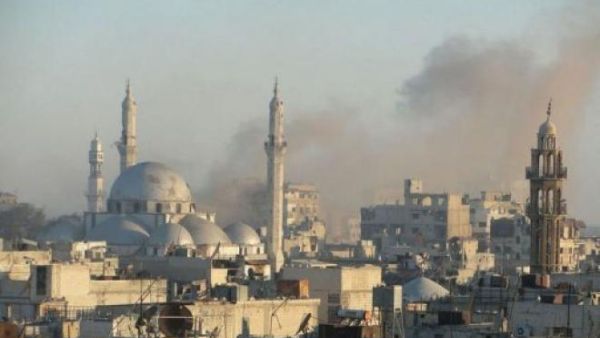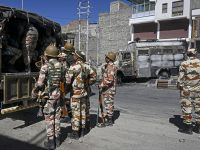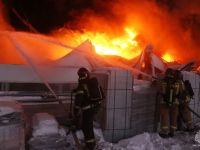Syrian air raids on rebel positions in the northern Aleppo and southern Deraa provinces killed 30 people Thursday, including civilians, a monitoring group said.
Underscoring the complexity of the mission of chemical weapons now inside the country, a regime warplane bombed the rebel-held town of Safira, an activist group said. A regime-controlled military complex believed to include chemical weapons facilities is located near the town.
The strike killed at least 16 people, according to the Britain-based Syrian Observatory for Human Rights, which obtains its information through a network of activists on the ground. The group did not know what was hit.
The Local Coordinating Committees, a network of activists based inside Syria, said Thursday’s death toll was at least 60 people.
Amateur video said to show the aftermath of the Safira airstrike was posted online later in the day. The video showed men and boys hauling a blanket filled with body parts onto a jeep where another two charred bodies already lay.
“Who is this?” one man can be heard asking. “By God, we don’t know brother,” another responded. The video also showed twisted metal, blood splattered on the floor and smashed concrete in the area of the strike.
Safira is southeast of the heavily contested city of Aleppo. The military complex near the town is believed to include an underground facility for chemical weapons production and storage, said Amy Smithson, a chemical weapons expert at the Center for Nonproliferation Studies, a U.S.-based think tank.
The village is controlled by Islamist groups, including the Al-Qaeda-affiliated Islamic State of Iraq and Greater Syria (ISIS).
“The regime has bombarded Safira for two days in order to relieve pressure on the supply route to Aleppo,” which the army reopened earlier this week, said Rami Abdel-Rahman, head of the Observatory.
The route is used not only to ferry weapons and reinforcements to troops at the front, but also to deliver food and medical supplies to civilians in regime-controlled areas.
The Observatory said six people were killed in another airstrike, near the town of Manbij, also in the area and controlled by ISIS and other Islamist groups.
Clashes also broke out between fighters from ISIS and Kurdish rebels in Azaz, the Observatory reported.
Near the border town of Ras al-Ain further to the east, opposition sources said a prominent local Kurdish figure, Abdel-Hamid al-Milali, was assassinated by ISIS in an ambush.
The sources said the dead man had received threats to his life from ISIS because he objected to the group’s taking up positions on land he owns.
In Aleppo, six people were killed by rebel fire, the official Syrian news agency SANA said. State media and opposition sources traded claims of who had the upper hand in fierce battles in the neighborhoods of Salaheddine and Azamieh.
In the southern province of Deraa, where the uprising began in March 2011, eight people, including two children, were killed in air raids on the village of Nawa, split between the army and rebels.
The Syrian Revolution General Commission said there were many people wounded and in serious condition, indicating the toll would rise.
At another front close to Damascus, fierce fighting broke out pitting government troops backed by Lebanon’s Hezbollah and pro-regime militiamen against rebels in Buwayda and Dhiyabieh near Sayyeda Zeinab, site of a revered Shiite shrine.
Fighting has been under way for months in the area, where Shiite Hezbollah fighters have long been deployed to assist regime forces and protect the shrine.
Also near Damascus, opposition sources said at least 11 people were killed and 20 injured by mortar fire in the suburb of Jaramana, with a large Christian and Druze population.
Pro-uprising Facebook pages listed the names of the dead, who included three Iraqi Christians.
Prior to Syria’s uprising, thousands of Iraqis settled in the Jaramana area, fleeing their native country in the wake of the 2003 U.S. invasion.
The activists said they did not know who fired the mortar bombs.








